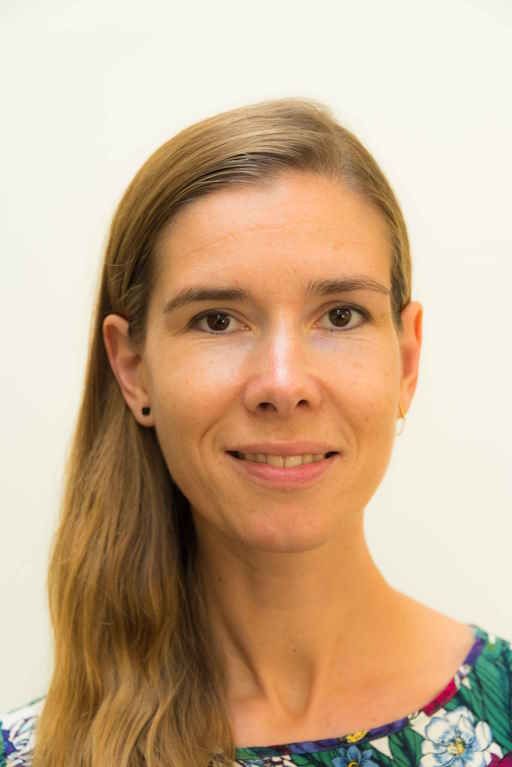Adult stem cell-derived rectal organoid models (cystic fibrosis)

Intestine

Principal Investigator
- Prof. Dr. Marianne Carlon
- Department of Chronic Diseases and Metabolism (Chrometa)
- Laboratory of Respiratory Diseases and Thoracic Surgery (BREATHE)
- ON1bis Herestraat 49 - box 706, 3000 Leuven
- Center for Molecular Medicine
- ON5bis-Herestraat 49 - box 1023, 3000 Leuven
- Board member of the Leuven Viral Vector Core
- https://www.linkedin.com/in/marianne-carlon-56b0b85/
- https://www.linkedin.com/company/breathe-lab-ku-leuven
- https://gbiomed.kuleuven.be/english/research/50000715/50488973/molmed
- https://gbiomed.kuleuven.be/english/corefacilities/LVVC/who-we-are
- marianne.carlon@kuleuven.be
Short CV
Marianne Carlon graduated as a doctor in veterinary medicine at the University of Ghent in 2007, with a specialization in research and industry. In 2012, she obtained a PhD in Biomedical Sciences at the KU Leuven on the development of gene therapy for cystic fibrosis (CF). She established a dedicated CF research group, focused on understanding the underlying gene defect and the development of gene therapeutic strategies targeting the basic defect, making use of primary cell models including organoids. In 2021, she got appointed a BOFZAP professorship in the Breathe Laboratory, extending her research to the development of humanized, 3D in vitro systems, including lung-on-chip, to model chronic lung diseases, such as cystic fibrosis and pulmonary fibrosis.
3D tissue models
- 3D Matrigel-embedded organoid models and derived cultures (e.g. monolayer-grown cultures on transwells, in house organ-on-chip systems, the latter in collaboration with Prof. Xevi Casadevall)
- The organoid samples from people with cystic fibrosis (pwCF) are cryopreserved and biobanked under the supervision of Prof. Dr. François Vermeulen, M.D., head of the clinical CF organoid lab.
Gene modulation:
- By use of viral vectors or virus like particles (VLPs), genes/cDNAs or gene editing machinery (CRISPR-Cas, base &prime editing) are delivered to organoid models to validate therapeutic efficacy of gene therapies, or to model pathogenic mutations.
- Viral vectors are produced by the Leuven Viral Vector Core (LVVC, contact: Prof. Rik Gijsbers, https://gbiomed.kuleuven.be/english/corefacilities/LVVC/).
Functional imaging:
- We developed a machine-learning (ML) model, DETECTOR (Detection of Targeted Editing of CFTR in Organoids), trained to perform two tasks: 1) identify the total number of organoids in a given image and 2) analyse their swelling properties, which in the case of CF rectal organoids is 100% CFTR-dependent.
Assay development and drug screening:
- We have assays available to screen small molecules, gene therapies,.. in organoid models at medium throughput. Read-outs via (high content) imaging (Operetta), confocal microscope, plate reader (Envision).
Illustrations:



Application
- Gene therapy development (gene addition, gene editing by use of CRISPR-Cas, base and prime editors)
- Assay development &drug screening
- Cystic fibrosis pathophysiology
- CFTR and other ion channel(s) biology
Some key publications
- Vidović D., Carlon M.S. , F da Cunha M., Dekkers J., Hollenhorst M., Bijvelds M., Ramalho A., Van Den Haute C., Ferrante M., Baekelandt V., Janssens H., De Boeck K., Sermet-Gaudelus I., de Jonge H., Gijsbers R., Beekman J., Edelman A., Debyser Z. (2016). rAAV-CFTRΔR rescues the cystic fibrosis phenotype in human intestinal organoids and CF mice. American Journal of Respiratory and Critical Care Medicine, 193 (3), 288-98 10.1164/rccm.201505-0914OC
- Maule G., Casini A., Montagna C., Ramalho AS., De Boeck K., Debyser Z., Carlon M.S.#, Petris G#, Cereseto A# (2019). Allele specific repair of splicing mutations in cystic fibrosis through AsCas12a genome editing. Nature Communications, 2019 Aug 7;10(1):3556. https://doi.org/10.1038/s41467-019-11454-9
- Ensinck, MM, De Keersmaecker, L, Ramalho, AS, Cuyx, S, Van Biervliet, S, Dupont, L, Christ, F, Debyser, Z, Vermeulen, F, Carlon, MS. Novel CFTR modulator combinations maximize rescue of G85E and N1303K in rectal organoids. ERJ Open Research 2022; 10.1183/23120541.00716-2021
- Tiroille V, Krug A, Bokobza E, Kahi M, Bulcaen M, Ensinck MM, Geurts MH, Hendriks D, Vermeulen F, Larbret F, Gutierrez-Guerrero A, Chen Y, Van Zundert I, Rocha S, Rios AC, Medaer L, Gijsbers R, Mangeot PE, Clevers H, Carlon MS, Bost F, Verhoeyen E. Nanoblades allow high-level genome editing in murine and human organoids. Mol Ther Nucleic Acids. 2023 Jun 8;33:57-74. doi: 10.1016/j.omtn.2023.06.004.
- Bulcaen M, Kortleven P, Liu RB, Maule G, Dreano E, Kelly M, Ensinck MM, Thierie S, Smits M, Ciciani M, Hatton A, Chevalier B, Ramalho AS, Casadevall I Solvas X, Debyser Z, Vermeulen F, Gijsbers R, Sermet-Gaudelus I, Cereseto A, Carlon MS. Prime editing functionally corrects cystic fibrosis-causing CFTR mutations in human organoids and airway epithelial cells. Cell Rep Med. 2024 May 21;5(5):101544. doi: 10.1016/j.xcrm.2024.101544.
- Bulcaen M, Liu RB, Gryspeert K, Thierie S, Ramalho AS, Vermeulen F, Casadevall I Solvas X, Carlon MS. Protocol for functional screening of CFTR-targeted genetic therapies in patient-derived organoids using DETECTOR deep-learning-based analysis. STAR Protoc. 2025 Jan 31;6(1):103593. doi: 10.1016/j.xpro.2024.103593.
Collaboration opportunities
- Viral vector / VLP / CRISPR-Cas (base &prime editing) design and protocols for their application in organoid models. Downstream analysis of DNA, RNA or protein read-outs in organoid models.
- Drug screening/validation in organoid models, from effectiveness (EC50) to cytotoxicity (CC50) determination.
- Image-based label-free analysis of organoid morphology over time (hours, days) by various analysis protocols (DETECTOR, ImageJ macros,...).
- Electrophysiology for CFTR and other ion channels or transporters, in collaboration with Prof. Ricard Farré Marti (dept. Chrometa, TARGID).
Contact person
- prof. dr. Marianne Carlon

